What are the Top Stocks in the S&P 500 by Index Weight for October 2024?
The S&P 500—widely regarded as one of the best measures of U.S. stock market performance—includes 500 of the largest publicly traded companies. In this article, we will discuss the top 25 stocks in the S&P 500 by index weight for October 2024, providing essential insights into their significance for investors.
Key Takeaways
- S&P 500 is a benchmark index that tracks the largest and most stable U.S. companies.
- The index is weighted by market capitalization, meaning that larger companies have more influence on its performance.
- The top 25 companies by index weight are key players that significantly impact the stock market and the U.S. economy.
As of September 24, 2024, the S&P 500 saw a year-to-date increase of 18.5%, bolstered by a mid-September Federal Reserve interest rate cut. Investors are increasingly interested in these major components, especially as many are driving the market to new highs.
The S&P 500, short for Standard & Poor’s 500, is one of the most widely followed equity indices in the world. It is used as a barometer for the overall health of the U.S. stock market and economy. The index is market-capitalization weighted, which means larger companies, like Apple, Microsoft, and Nvidia, have a bigger impact on its performance.
What Makes the S&P 500 Unique?
- Diversity: It covers a wide range of sectors, from technology and finance to healthcare and consumer goods.
- Size: The companies in the index represent roughly 80% of the total market capitalization of U.S. public companies.
- Stability: By focusing on well-established firms with high market caps, the S&P 500 tends to offer lower volatility than other indices.
How Are Stocks Selected for the S&P 500?
To be included in the S&P 500, companies must meet several stringent criteria, ensuring that only the most stable and financially healthy organizations are included. Here’s what it takes to be added:
- U.S.-Based: The company must be headquartered in the United States and trade on a major U.S. exchange.
- Market Cap: A minimum market cap of $15.8 billion is required, along with a float-adjusted market cap that makes up at least 50% of the total index.
- Profitability: The company must have reported positive earnings in the most recent quarter and for the last four consecutive quarters.
- Liquidity: The stock must have a float-adjusted liquidity ratio of 0.75 or greater, ensuring it is easy to buy and sell.
- Trading Volume: A minimum of 250,000 shares traded over the past six months is required to maintain index integrity.
These criteria are designed to ensure that the S&P 500 remains a reliable indicator of the health of the U.S. stock market.
Top 10 Sectors in the S&P 500 by Weight
As of September 2024, the S&P 500 is heavily concentrated in a few key sectors, with Information Technology leading the charge.
| Sector | Weight |
|---|---|
| Information Technology | 32.40% |
| Financials | 12.59% |
| Health Care | 12.21% |
| Consumer Discretionary | 10.20% |
| Communications Services | 8.67% |
| Industrials | 7.49% |
| Consumer Staples | 6.11% |
| Energy | 3.32% |
| Utilities | 2.61% |
| Real Estate | 2.44% |
The Information Technology sector, driven by giants like Apple, Microsoft, and Nvidia, dominates the index. Conversely, sectors like Energy, Utilities, and Real Estate have relatively smaller weightings.
Top 25 Companies in the S&P 500 by Index Weight
As of September 24, 2024, here are the top 25 companies by index weight:
| Company Name | Weight (%) |
|---|---|
| Apple Inc. (AAPL) | 7.13% |
| Microsoft Corp. (MSFT) | 6.67% |
| Nvidia Corp. (NVDA) | 5.92% |
| Amazon.com, Inc. (AMZN) | 3.75% |
| Meta Platforms, Inc. (META) | 2.55% |
| Alphabet Inc. Class A (GOOGL) | 1.96% |
| Berkshire Hathaway (BRK.B) | 1.72% |
| Broadcom Inc. (AVGO) | 1.67% |
| Alphabet Inc. Class C (GOOG) | 1.62% |
| Eli Lilly and Co. (LLY) | 1.50% |
| Tesla, Inc. (TSLA) | 1.44% |
| JPMorgan Chase & Co. (JPM) | 1.24% |
| UnitedHealth Group Inc. (UNH) | 1.10% |
| Exxon Mobil Corp. (XOM) | 1.09% |
| Visa Inc. (V) | 1.00% |
| Mastercard Inc. (MA) | 0.85% |
| Procter & Gamble Co. (PG) | 0.85% |
| Costco Wholesale Corp. (COST) | 0.84% |
| Johnson & Johnson (JNJ) | 0.81% |
| Home Depot Inc. (HD) | 0.80% |
| Walmart Inc. (WMT) | 0.72% |
| AbbVie Inc. (ABBV) | 0.71% |
| Netflix Inc. (NFLX) | 0.63% |
| Merck & Co., Inc. (MRK) | 0.61% |
| Coca-Cola Co. (KO) | 0.58% |
These companies make up a significant portion of the S&P 500, with Apple, Microsoft, and Nvidia contributing the most to the index’s performance. Tech companies have continued to dominate the list, benefiting from strong cash flow generation, artificial intelligence advancements, and cloud computing trends.
Why Are the S&P 500’s Top 25 Stocks Important?
The top 25 stocks by index weight are critical to understanding market health. Because the S&P 500 is market-cap weighted, these companies have a disproportionately large effect on the index’s performance. This makes them key indicators of the broader market trends.
In particular, tech stocks like Apple, Microsoft, and Nvidia are driving significant gains, thanks to strong profit margins and emerging technologies like AI. For investors, focusing on these top 25 stocks offers a clear lens into market leadership and potential investment opportunities.
How Do I Invest in the S&P 500?
Investing in the S&P 500 can be done in various ways:
- ETFs: Popular choices include SPDR S&P 500 ETF Trust (SPY), Vanguard S&P 500 ETF (VOO), and iShares Core S&P 500 ETF (IVV).
- Index Funds: Traditional index funds like Vanguard 500 Index Fund (VFIAX) and Fidelity 500 Index Fund (FXAIX) are great for long-term investors.
- Options & Futures: More experienced investors might explore E-mini S&P 500 futures, which allow speculation on the future price of the index.
Advantages of Investing in the S&P 500
Investing in the S&P 500 offers several benefits:
- Diversification: Exposure to 500 of the largest U.S. companies, offering a diversified portfolio in one investment.
- Historical Growth: The S&P 500 has shown consistent growth over the long term, making it a solid choice for long-term investors.
- Low Risk: Due to its diversified nature, the index offers lower risk compared to investing in individual stocks.
Disadvantages of Investing in the S&P 500
While the S&P 500 provides many advantages, there are notable downsides to consider:
- Sector Concentration: The index is heavily weighted toward certain sectors, especially technology. As of October 2024, 32.40% of the index’s weight is allocated to information technology companies like Apple, Microsoft, and Nvidia. If these sectors underperform, it can disproportionately impact the overall index.
- Limited International Exposure: Since the S&P 500 includes only U.S.-based companies, investors miss out on opportunities in emerging markets or international stocks. While many of the companies operate globally, the index doesn’t directly provide exposure to international equities.
- Over-Dependence on Large-Cap Stocks: The S&P 500 focuses on large-cap companies, leaving out smaller, high-growth opportunities that might outperform over the long term. Investors looking for broader exposure to small-cap or mid-cap stocks would need to invest in additional indices or funds.
- Valuation Risk: The S&P 500’s large-cap, tech-heavy focus can result in higher valuations, particularly during bull markets. Investors may pay a premium for these stocks, increasing the risk of a downturn.
By understanding these risks, investors can better evaluate how the S&P 500 fits into their overall portfolio and investment strategy.
S&P 500 vs. Equal Weight Index
A common critique of the S&P 500 is its heavy reliance on the top stocks. An alternative approach is the S&P 500 Equal Weight Index, which gives each of the 500 stocks an equal weight, regardless of their market capitalization.
Key Differences:
- Market Cap Weighting: In the standard S&P 500, larger companies like Apple and Microsoft carry more weight and thus have more influence on performance.
- Equal Weighting: In the Equal Weight Index, each stock has the same influence, regardless of size, creating a more balanced exposure across sectors.
Performance Comparison:
As of September 2024, the S&P 500 Equal Weight Index posted a 9.92% return over the past year, while the standard S&P 500 delivered a 19.23% return. However, the performance of the Equal Weight Index tends to be less volatile and better diversified across sectors, making it a popular option for investors seeking to minimize concentration risk.
The Bottom Line
The S&P 500 remains one of the most widely followed benchmarks for U.S. stock market performance, and the top 25 companies by index weight offer valuable insights into the current market trends. These stocks, primarily tech-driven, are essential to understanding the broader economy’s health and are the primary drivers of market performance.
While investing in the S&P 500 offers diversification and consistent long-term growth, the index’s sector concentration—particularly in technology—could pose risks for investors. Additionally, alternatives like the Equal Weight Index provide a more balanced approach to investing in the same 500 companies.
Investors looking to diversify their portfolios while capitalizing on the strength of U.S. large-cap companies can benefit from an investment in the S&P 500. Whether through ETFs, index funds, or futures, this index remains a cornerstone of passive investing strategies.
As of the date this article was written, the author does not own any of the above securities.
Frequently Asked Questions (FAQs)
The top five companies by index weight in the S&P 500 are:
Apple (AAPL): 7.13%
Microsoft (MSFT): 6.67%
Nvidia (NVDA): 5.92%
Amazon (AMZN): 3.75%
Meta Platforms (META): 2.55%
Technology companies like Apple, Microsoft, and Nvidia have grown rapidly due to advancements in AI, cloud computing, and consumer technology, making them dominant players in the market. Their large market capitalizations mean they carry more weight in the index.
Investors can easily invest in the S&P 500 through ETFs like SPDR S&P 500 ETF (SPY), Vanguard S&P 500 ETF (VOO), or iShares Core S&P 500 ETF (IVV). Additionally, traditional index funds such as Vanguard 500 Index Fund (VFIAX) and Fidelity 500 Index Fund (FXAIX) provide exposure to the S&P 500.
Yes, the S&P 500 has historically delivered consistent long-term growth. It provides exposure to 500 of the largest and most stable U.S. companies, making it a solid option for long-term investors looking to reduce risk through diversification.
The S&P 500 is market-cap weighted, meaning larger companies have more influence over its performance. In contrast, the S&P 500 Equal Weight Index assigns the same weight to each company, providing more balanced exposure across the index.
The top 25 stocks in the S&P 500 represent some of the largest and most influential companies in the U.S. economy. Their performance has a significant impact on the index’s overall direction and can be a key indicator of market trends.
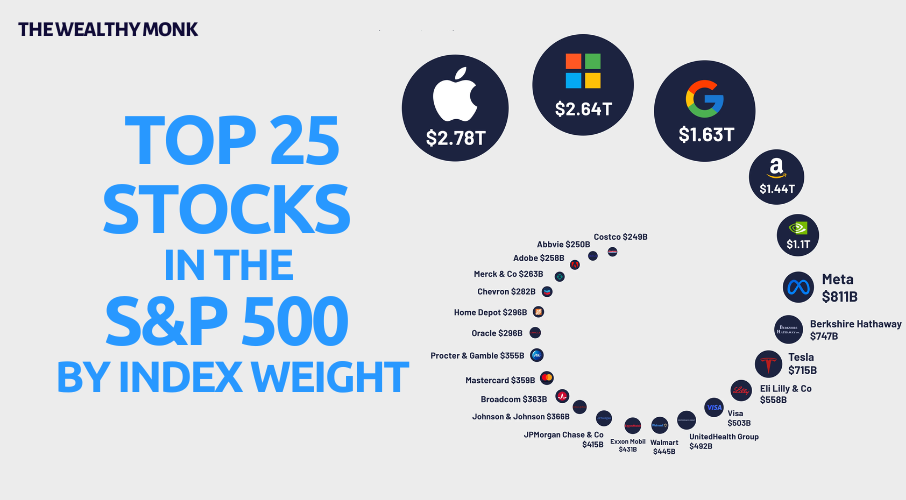


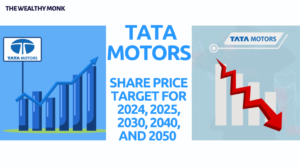
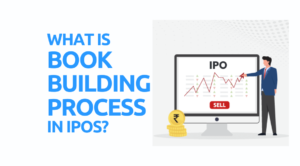




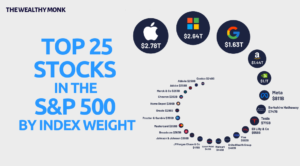
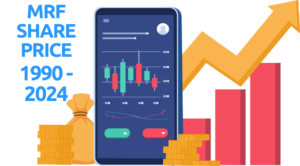
Post Comment